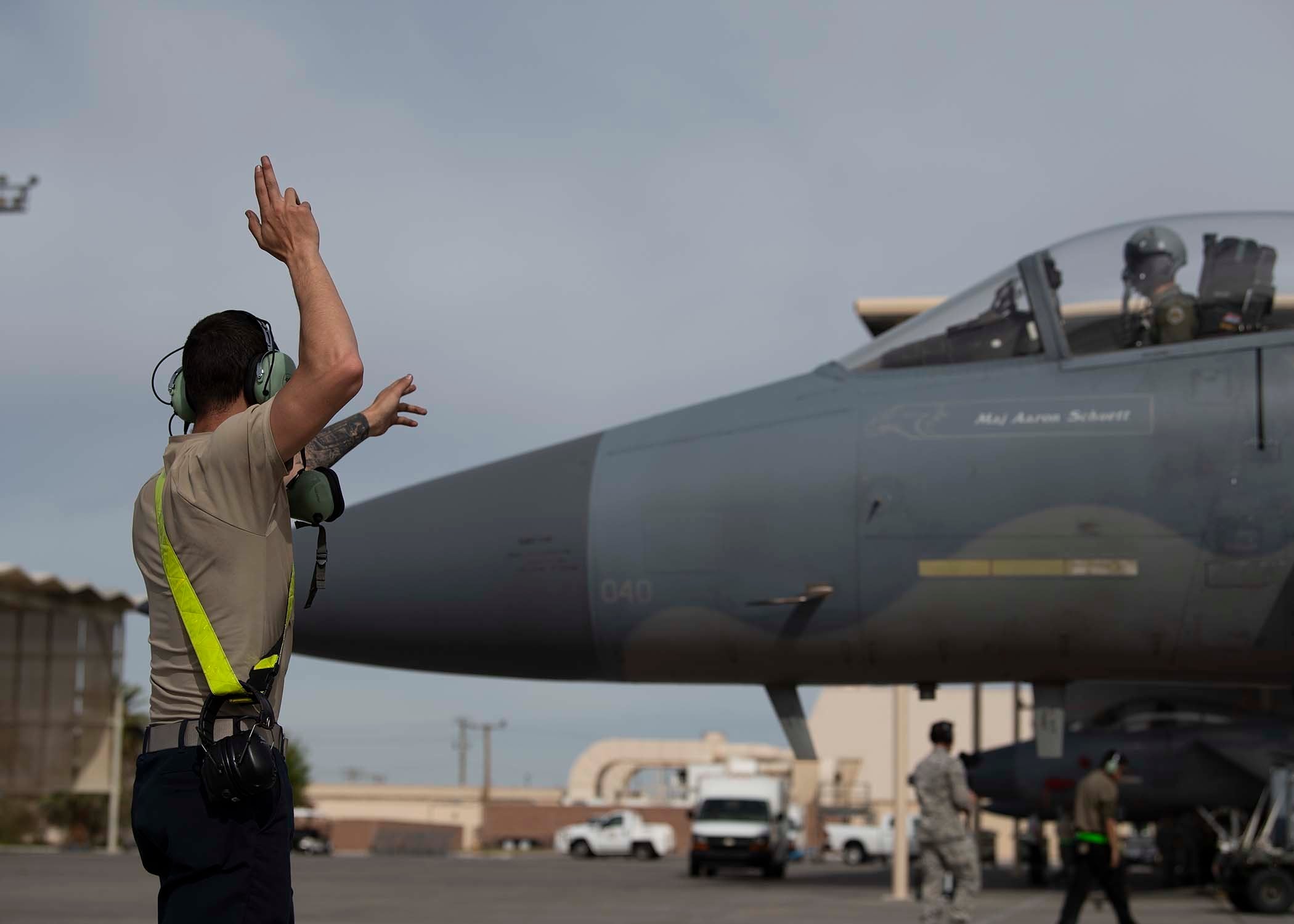WASHINGTON — The Air Force is wrapping up the first weeklong operational test of its two new F-15EX Eagle II fighter jets.
The F-15EXs, updated versions of the fourth-generation F-15 jet, took part in their first major test with the Air Force at Nellis Air Force Base in Nevada from Oct. 18 to Oct. 25. The fighters — so far, the only F-15EXs that have been built — flew alongside F-15Cs and F-15Es, the Air Force said in a Friday release.
Maj. Kevin Hand, one of the test pilots who flew the F-15EX, said in the release the tests were intended to highlight the differences between it and the older C model — particularly its digital flight control system making it a fly-by-wire aircraft. The F-15C uses a hydromechanical system for its flight controls.
The Air Force also set out to test the EX’s Eagle Passive/Active Warning and Survivability System, an electronic warfare system.
RELATED

“The EPAWS system is the next-gen advanced electronic attacks, as well as electronic protects, system that the EX and Strike Eagles are currently testing and developing and hopefully fielding in the relatively near future,” Hand said. “That’s going to give us the ability to essentially go into some of these more advanced threats or aerial denial kind of situations where we can now self-protect and self-jam our way through.”
The Air Force Operational Test and Evaluation Center Detachment 6 is heading up the initial operational test and evaluation effort for the F-15EX.
The first two F-15EXs arrived at Eglin Air Force Base in Florida earlier this year, with tail number 001 delivered in March and the second, 002, in April.

Lt. Col. Kenneth Juhl, an F-15 tester for the test and evaluation center, said conducting the tests at Nellis’s air-to-air and surface-to-air training ranges will help yield the best quality data to assess how well the systems worked.
Although pilots are in the thick of the test flights, Juhl said, their perception on what is happening may not always be accurate.
“Oftentimes, we go out there as pilots, and we think that the airplane works as well as it should, but behind the scenes, we dig into some of the instrumentation, and it wasn’t exactly what we remembered,” Juhl said. “Every so often, we need the instrumentation folks to help us out with what was really going on.”
Besides providing instant feedback, Juhl said, the data can also be scrutinized to locate potential problems and determine how to quickly fix them.
Before the tests at Nellis, the fighters had gone through developmental tests to evaluate proper specifications and safety standards. In May, both F-15EXs also took part in the Northern Edge joint training exercise in Alaska to test how well the aircraft performs when its GPS, radar and other systems are at risk of being jammed.
Once the Nellis tests are done, the fighters will fly back to Eglin for more developmental tests.
“We’ll be transitioning back into developmental tests for the remainder of this year and going into next year, as we continue to test the additional capability of the platform to include the additional weapon stations and additional Operational Flight Program upgrades,” F-15EX test project manager Colton Myers said.
After that, Juhl hopes to get the F-15EX out to future exercises such as Red Flag-Nellis to gather additional performance data.
Stephen Losey is the air warfare reporter for Defense News. He previously covered leadership and personnel issues at Air Force Times, and the Pentagon, special operations and air warfare at Military.com. He has traveled to the Middle East to cover U.S. Air Force operations.








